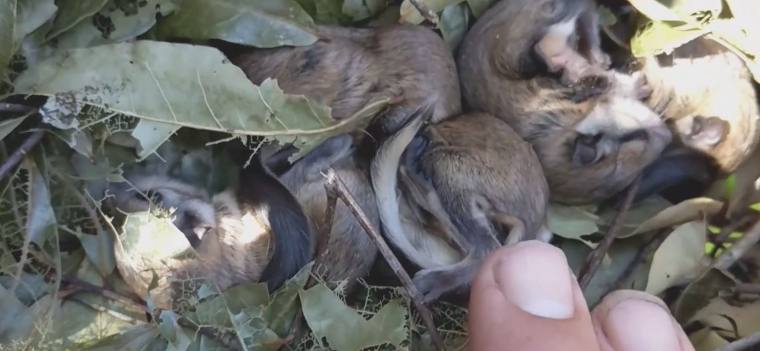-
info@aaanimalcontrol.com
Call us for help in your town
Humane Wildlife Education
What Should I Do With a Nest of Squirrels?
Need squirrel removal in your hometown? We service over 500 USA locations! Click here to hire us in your town and check prices- updated for year 2020.
It sounds like quite a bizarre question to ask, but it is actually quite common to find a nest of squirrels in the attic. When an animal breaks into your home or building, it is usually a female animal and she has one thing in mind — finding the right spot to build a nest so that she can take care of her babies.

In almost all cases with invading squirrels, it will be a female with her young in a nest. That nest is going to be hidden away somewhere that is relatively protected, doesn't let in the cold or rain, and keeps the entire family out the way of prying eyes and predators … including humans. This does leave you with only a few places in the building itself, such as the attic, chimney, roof, under porches and decking, etc., but it does make life difficult when it comes to getting rid of them. In order to do this, you're going to need to find them first … It might be harder than you'd think.
Of course, you can use the sound and smell of these animals to help locate their hiding spot. Wild animals tend to have a distinct scent about them. The stronger the smell, the closer you are to the hive of activity; in this case, a nest filled with youngsters.
Squirrels, both adult and babies alike, will make sounds too, some of which you may be able to hear. The bad thing about squirrels is that they are awake during the day, which tends to be the noisiest part. At night, when everything else is usually quieter, animal noises seem much louder and easier to hear. Noises made throughout the day tend to get drowned out by everything else.
Using your senses of sight and sound, you can pinpoint the nest of youngsters to one specific location. You might not be able to see them yet, but a bit of snooping around will lead you to the source, if that source is easily accessible.
But what do you do next?
If you are going to move these squirrels yourself, you will need gloves, a large enough trap to keep them all contained, comfortable, and safe, plus a watchful eye. When mama comes home, she is NOT going to be happy that you are handling her young. If you attempt to get close to her young while she is nearby, she'll attack you. This is an aggressive, but defensive, act. Again, you must bear in mind that this is an animal that could potentially carry the rabies virus, so getting too close isn't an option you'll want to take lightly.
If you'd rather leave the job to the professionals, wildlife rehabilitators or control officers are going to be your best shot at getting the job done properly, quickly, and without wasting money. Repellents and DIY trapping or exclusion approaches are usually more expensive than just hiring in a company.
Things to bear in mind:
You will need to take into consideration the legalities of moving, killing, trapping, or releasing squirrels in your state. In some states, it is illegal to kill squirrels, accidentally or otherwise. In other states, you may find that releasing or transporting of squirrels isn't allowed, because of various disease threats. If numbers are high, you may also find that certain states will not permit the release of pest animals back into the wild. These are all things that you will need to check before you take any action.
For more information, you may want to click on one of these guides that I wrote:
How much does squirrel removal cost? - get the lowdown on prices.
How to get rid of squirrels - my main squirrel removal info guide.
Example squirrel trapping photographs - get do-it-yourself ideas.
Squirrel job blog - learn from great examples of squirrel jobs I've done.
Squirrels in the attic - what to do to solve the problem.


















